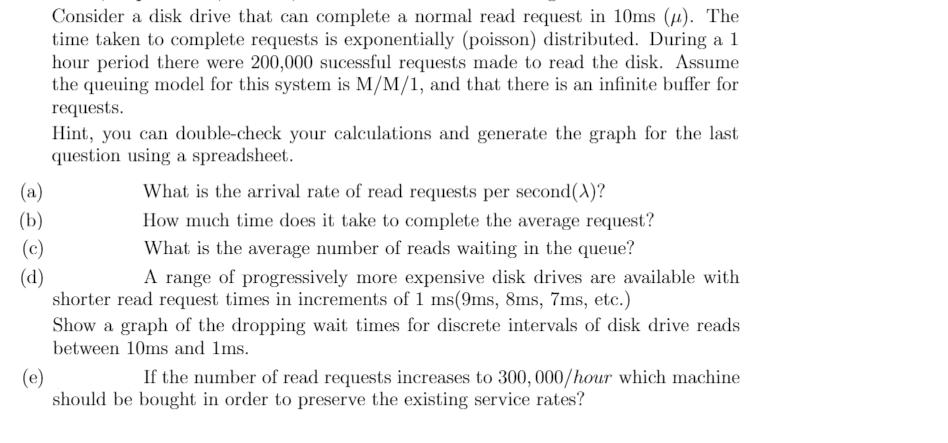Answered step by step
Verified Expert Solution
Question
1 Approved Answer
(a) (b) (c) (d) (e) Consider a disk drive that can complete a normal read request in 10ms (). The time taken to complete

(a) (b) (c) (d) (e) Consider a disk drive that can complete a normal read request in 10ms (). The time taken to complete requests is exponentially (poisson) distributed. During a 1 hour period there were 200,000 sucessful requests made to read the disk. Assume the queuing model for this system is M/M/1, and that there is an infinite buffer for requests. Hint, you can double-check your calculations and generate the graph for the last question using a spreadsheet. What is the arrival rate of read requests per second (A)? How much time does it take to complete the average request? What is the average number of reads waiting in the queue? A range of progressively more expensive disk drives are available with shorter read request times in increments of 1 ms(9ms, 8ms, 7ms, etc.) Show a graph of the dropping wait times for discrete intervals of disk drive reads between 10ms and 1ms. If the number of read requests increases to 300,000/hour which machine should be bought in order to preserve the existing service rates?
Step by Step Solution
There are 3 Steps involved in it
Step: 1

Get Instant Access to Expert-Tailored Solutions
See step-by-step solutions with expert insights and AI powered tools for academic success
Step: 2

Step: 3

Ace Your Homework with AI
Get the answers you need in no time with our AI-driven, step-by-step assistance
Get Started


